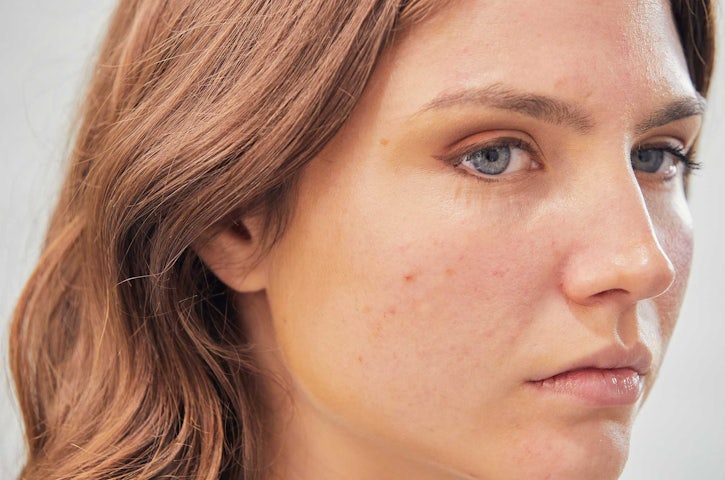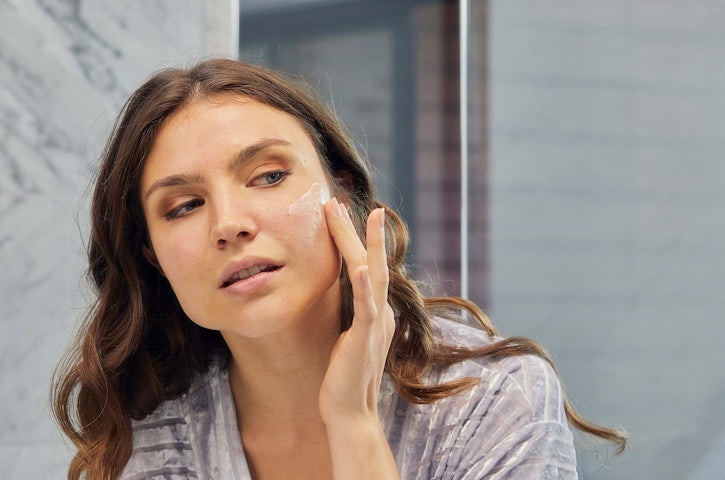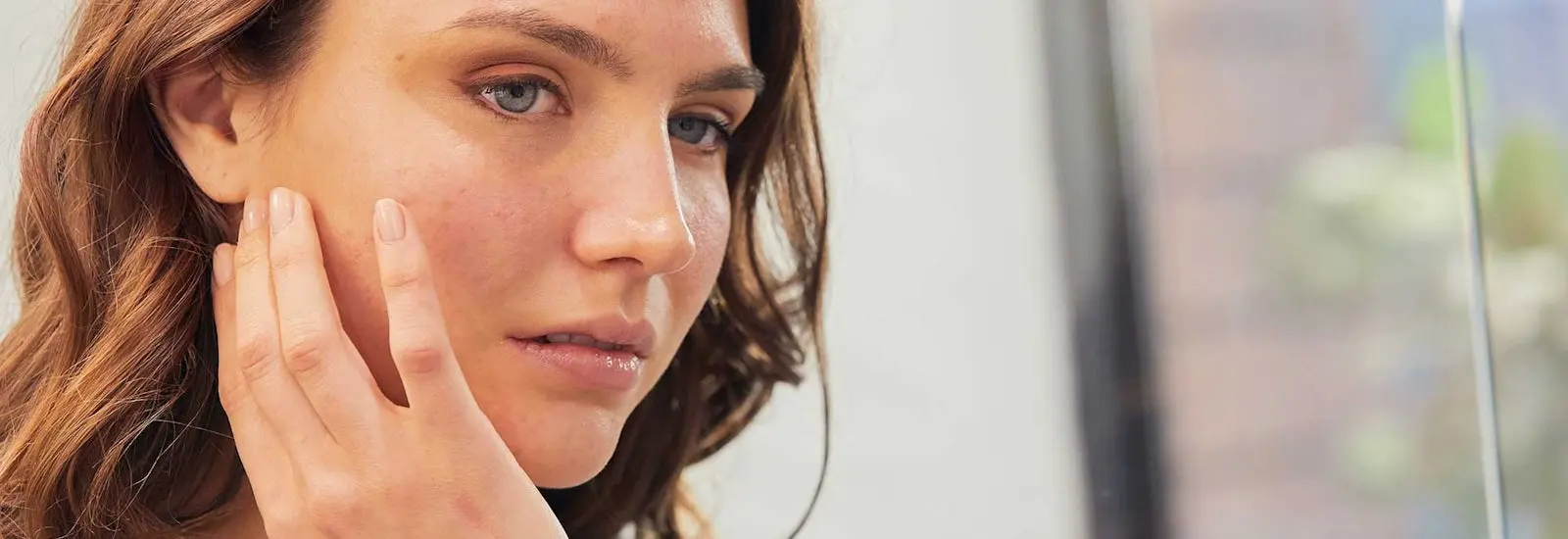Learn what’s at the root of uneven skin, and how you can help prevent and reduce discoloration.

Blotchy Skin Explained
Blotchiness and uneven skin tone can be due to many factors including sun exposure and heredity. You may see red, white or dark patches on your skin. These blotchy patches of skin may become more visible when dead surface skin is not regularly exfoliated.

Quick and Long-Term Fixes for Blotchy Skin
While blotchy skin can be caused by a number of factors you cannot control, including heredity, there are also factors that you can manage, such as sun damage.
Your skin speeds up the production of skin cells called melanocytes to protect against sunlight. These melanocyte cells generate melanin, which is what causes your skin to tan in the sun. Unfortunately, sometimes the sun causes the melanocytes to increase unevenly, which can then result in darker and lighter patches of skin.1 The good news is that there are a number of ways to reduce the appearance of blotchy skin, and help prevent the dark patches from recurring or worsening.
One of the easiest and quickest solutions is through powerful, dermatologist recommended ingredients like retinol, Vitamin C or Hexinol® Technology that can deliver long lasting benefits to improve the look of skin tone and texture. Retinol works by speeding the natural skin surface cell renewal process, Vitamin C gently helps diffuse the look of brown spots and even out skin tone, while Hexinol® Technology improves overall radiance of the skin.
Chemical peels, microdermabrasion, and bleaching creams may also be helpful. However, be sure you talk to your dermatologist first, since some of these approaches may irritate your skin or even make the blotchiness worsen.
The most important thing is to keep your sun exposure to a minimum. Always apply a broad-spectrum sunscreen or daily moisturizer with a sun protection factor (SPF) of at least 30. If you want the glow of tanned-looking skin, try a sunless tanning product.
Remember that it took time for dots, spots, blotches and uneven skin tone to appear, so be patient when pursuing a solution. With vigilant sun protection, an effective skin care routine, and smart cosmetic choices, time can also help you improve the look of blotchy skin.
We recommend that you consult your dermatologist or physician for proper diagnosis and treatment. Melasma is a medical term for blotchy, dark-colored patches that appear on your skin. Mayo Foundation for Medical Education and Research.





